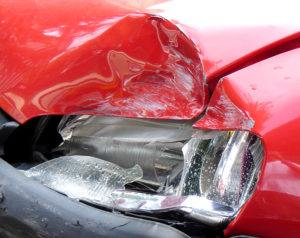The Ins and Outs of Full Coverage Auto Insurance: What Does it Really Cover?
 The term full-coverage is not one that is used in the automotive insurance industry; it does not exist. Rather, agents who sell car insurance use the term coverage and refer to the separate levels when offering you a policy.
The term full-coverage is not one that is used in the automotive insurance industry; it does not exist. Rather, agents who sell car insurance use the term coverage and refer to the separate levels when offering you a policy.
Click here to find personalized car insurance rates fast by entering your ZIP code into the FREE box right now!
Full-coverage is a term that consumers usually refer to when asking about car insurance. It generally means they want full protection in the event of an accident. This differs from partial coverage, like liability. Unfortunately, there is only one way to have full protection against a car accident or any other event.
The only way you can have complete protection is to combine every type of coverage offered. This would include the required and optional levels. Instead of concentrating on full-coverage, you may want to recall your current driving habits, type of vehicle, and other factors. This will give you a good idea of the level of car insurance you really need.
What Full-Coverage Really Covers
Since you already know there is no such thing as full-coverage, it is very important to know the levels. Most people believe full-coverage includes liability, collision, comprehensive and underinsured/uninsured motorist. This is because the combination of these coverage levels ensures optimal protection.
All states have laws that require liability; however, others want their residents to have more.
For example, in the state of Illinois you must have uninsured/underinsured motorist coverage in addition to liability. The minimum limits are 20/40/15.
This means your coverage limits end at $20,000 for every person involved in an accident. You receive $40,000 for every accident and $15,000 for property damage.
 Limits are extremely important to understand. If the amount required is more than the limit, your financial responsibility begins. This is a common misconception regarding full-coverage. Many understand they are covered, but are not sure what the numbers represent.
Limits are extremely important to understand. If the amount required is more than the limit, your financial responsibility begins. This is a common misconception regarding full-coverage. Many understand they are covered, but are not sure what the numbers represent.
Having prior knowledge of these numbers and their value is vital. You will have protection, but medical expenses can soar past $20,000 for one person. The $15,000 minimum may seem sufficient unfortunately; vehicles today often cost more than this amount.
Uninsured/Underinsured motorist bodily injury coverage protects you against drivers who do not have insurance. The minimum limits are 20/40. This is equivalent to $20,000 for each person and $40,000 for each accident.
Collision and Comprehensive are not mandatory. They are however, included in policies that most refer to as full-coverage. These levels of coverage pay for damage. If your vehicle requires repairs, you will need to pay the deductible first. This is your out-of-pocket cost.
Collision and comprehensive coverage differ. Collision pays for damage resulting from an accident or object. Comprehensive pays for damage resulting from fire, flood, ice, theft, or vandalism.
 When adding these levels of coverage together onto one policy, the average consumer can rest easy. They cover a multitude of issues that are likely to occur during the life of your vehicle. This is why most use the term full-coverage.
When adding these levels of coverage together onto one policy, the average consumer can rest easy. They cover a multitude of issues that are likely to occur during the life of your vehicle. This is why most use the term full-coverage.
What Full-Coverage Does Not Protect
There are other levels of coverage not included in the typical full-coverage policy. You may never have need of this type of car insurance. However, it is necessary for you to understand all of the levels available.
- GAP Insurance – Guaranteed Auto Protection – This is a type of car insurance that pays if someone steals your car. In addition, if during an accident the vehicle receives damage beyond repair, GAP insurance pays as well. It applies to leased and financed vehicles only. It covers the difference between what your vehicle is worth and how much you owe.
- Accidental Death – This type of insurance pays a one-time death benefit to the beneficiary. If you are involved in a fatal car accident, your spouse, or designated beneficiary receives the payment.
- Rental Car Reimbursement – Many customers have no idea that their full-coverage policy does not include rental car options. It is only after they require temporary transportation that they find out.
- Towing – Consumers often skip this level of coverage because they belong to a motor club, like AAA. For a fraction of the cost, you can receive all types of benefits if your vehicle requires towing. They also provide other features, like lockout service, tire changes, battery service and more.
- Medical Payments – Although liability coverage pays for medical costs, this type of coverage is very different. If you or any passenger is injured or killed, payments ensue. It also pays for funeral expenses.
There are hosts of other levels of coverage that your auto insurance provider can explain to you. When shopping for the best rates, make sure you understand all of the terms. Do not accept a policy until you are clear on your level of coverage.
Free Car Insurance Comparison
Compare Quotes From Top Companies and Save
Secured with SHA-256 Encryption
No-Fault Auto Insurance States
 The reason car insurance companies do not use the term full-coverage is because it is misleading. A customer who purchases a policy thinking they are fully insured against all liability is sadly mistaken. The laws are changing frequently. Unless you stay abreast of the situations affecting your state, you will be in for problems.
The reason car insurance companies do not use the term full-coverage is because it is misleading. A customer who purchases a policy thinking they are fully insured against all liability is sadly mistaken. The laws are changing frequently. Unless you stay abreast of the situations affecting your state, you will be in for problems.
The question of no-fault auto insurance is one of the most debatable today. Sadly, many consumers do not know this term exists. Greater still are consumers who do not fully comprehend the meaning. They may even reside in one of the 12 states that participate in the no-fault process.
Many who are familiar with hearing the term, assume that no-fault means the car accident was not their fault. In many circumstances, this is partly true; however, it goes far beyond this simple explanation.
No-fault auto insurance refers to the ability of a customer to sue. This can pertain to the auto insurance provider or the person involved in a car accident. According to the Insurance Information Institute, the 12 no-fault states are Michigan, New York, New Jersey, Colorado, Minnesota, Florida, Hawaii, Massachusetts, North Dakota, Kansas, Pennsylvania and Utah.
No-fault auto insurance states have limits.
The auto insurance companies who write their policies pay benefits, usually to the first party only. They also have tight restrictions on each person’s right to sue.
The first party benefits are often referred to as PIP or Personal Injury Protection, the term is used on all auto insurance policies. They are only mandatory in the no-fault states.
Limited Tort vs. Full Tort
Limited tort and full tort are part of the no-fault process. They determine amounts. The automobile insurance companies will pay up to the policy amount only. This is where the tort limits enter. If a customer needs more than the limit, the problem begins.
 The at-fault driver must make recompense. Each state with a no-fault policy in effect will request specifics if the amounts exceed the payout limit. This is especially true if the at-fault driver only had the minimum coverage.
The at-fault driver must make recompense. Each state with a no-fault policy in effect will request specifics if the amounts exceed the payout limit. This is especially true if the at-fault driver only had the minimum coverage.
All new car insurance requests are drafted with full tort requirements. This is part of the law and all must choose. However, most customers are not even aware of the process. The car insurance companies present a variety of documents to the pending insured and show them where to sign.
Since all policies are automatically full tort, the customer is usually presented with a waiver with the other papers. This is the time when they should ask questions, but seldom do. The waiver is signed along with the other documents.
This waiver relinquishes full tort rights and degrades the level to limited. Limited tort is exactly how it sounds. It limits your ability to seek the highest amount for your injury. In the case of death, it also places a cap on any amount your beneficiary receives.
The average customer does not take the time needed to read all of the information about their policy.
Before they realize, it is too late. They have signed their rights away. Full tort removes the lawsuit restrictions. You may sue without limits as long as you have proof of injuries.
When applying for car insurance online, it is part of the disclosure agreement. Many never read this either. They scroll to the bottom and submit the application. It is only when a tragedy strikes, that it becomes all too apparent.
Ad-On States
 An add-on state is a state that partially participates in the no-fault process. There are 11 in total. Arkansas, Delaware, Washington D.C., New Hampshire, Maryland, South Dakota, Oregon, Texas, Washington, Virginia and Wisconsin.
An add-on state is a state that partially participates in the no-fault process. There are 11 in total. Arkansas, Delaware, Washington D.C., New Hampshire, Maryland, South Dakota, Oregon, Texas, Washington, Virginia and Wisconsin.
These states allow drivers to receive a level of compensation that may be lower than those in no-fault states. However, they are allowed to sue without restrictions. The first party benefits are attached to the tort liability.
Those who are insured in these add-on states can either benefit or lose from it. It depends on the amounts and the level of injury. Many who reside in these states receive substantial payments because they have lower state premium averages. Of course, with the exception of Washington D.C., this state has one of the highest in the nation.
Protect Yourself Against the Unknown
With so much information regarding auto insurance, you need to protect yourself. Today it is not good enough to go by word of mouth. You need hard facts and data. You also need to find trustworthy resources.
The Property Casualty Insurers Association of America website offers an excellent way to stay informed.
This group advocates for consumers and lists all of the newest laws. If you need to find out what is happening in your state, check here first.
 You can find issues from car insurance scoring to auto insurance underwriting efforts. All of these things will ultimately affect your coverage levels and your insurance rates.
You can find issues from car insurance scoring to auto insurance underwriting efforts. All of these things will ultimately affect your coverage levels and your insurance rates.
You will understand how your level of car insurance affects your rights to claim damages. When you have questions about legislative endeavors, they will answer them.
It will be too late if you are the victim of a senseless hit-and-run or DUI and find out you have limited options. Educate yourself today and learn how you and your family can truly have full-coverage protection.
Receive great car insurance rates today by placing your ZIP code into the FREE toolbox on this page!
